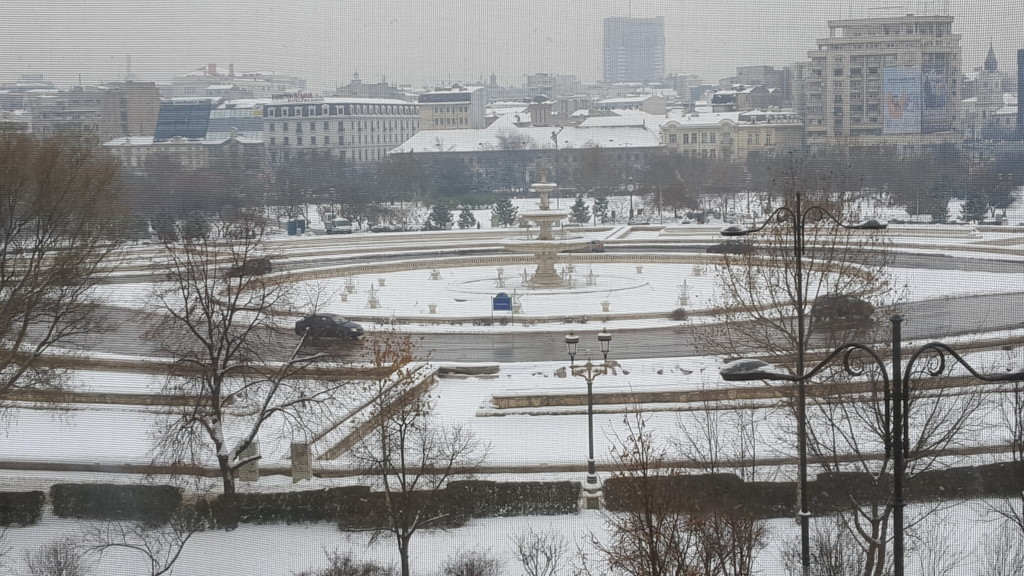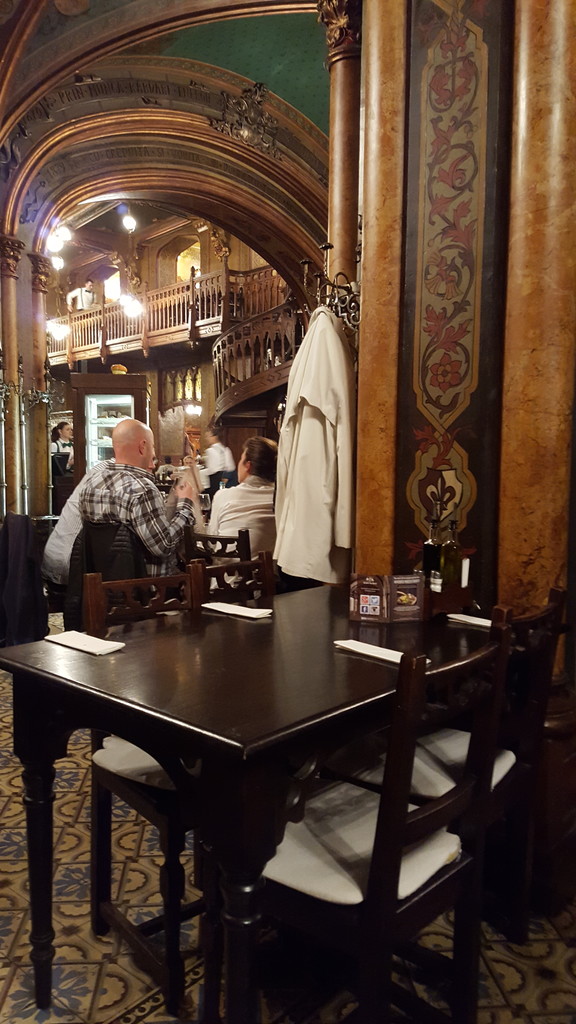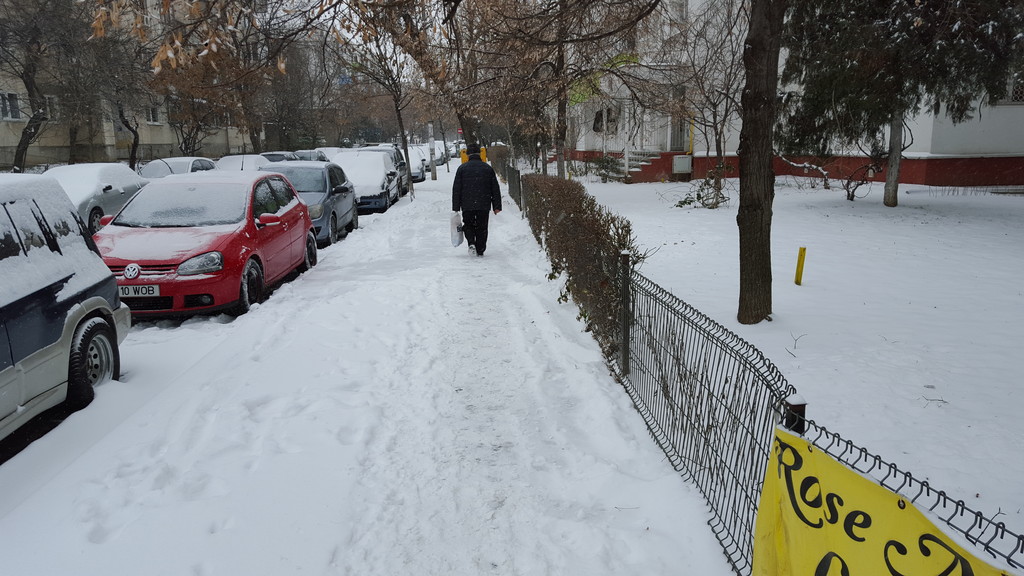Erasmus in Romania
When I got home from my first Erasmus experience, my thirst for travelling the world and getting to know new places didn't stop growing, so I started to look into if I do something similar again.
That's when I found the Erasmus internship program, which, unlike the usual Erasmus experience, aims towards professional and work purposes. The maximum amount of time you can go on the Erasmus program is one year, or 12 twelve months. As I'd already been on an Erasmus placement for 9 months in Poland, I could only get an internship scholarship for a total of 3 months. Another thing that stands out about this program is that you have to look for everything yourself, it's not enough just to pick your destination and university and then start the procedure. You have to find a company, either from the web pages made for this by the university or on other pages you find looking into it on the internet. So you're going to end up sending hundreds and hundreds of applications to companies all over the world to see if any of them will give you a chance at an interview, or if they get in touch with you after seeing your profile on an internship page. Once the company accepts you as a candidate for the program, you then have to start the paperwork with Erasmus.
In my case, it was the company that got in touch with me, through the internship portal www.erasmusintern.org. The name of the company is Hieglorifs International and it has headquarters in various European countries: Latvia, Romania and Italy, giving me the option to choose the country I most preferred to do my internship in. I chose Bucharest, the capital of Romania. Once I was accepted by the company and I'd gone through the procedures with my university, I set my course for the the capital of Romania for 3 months total.
I chose Romania because I wanted to have another Erasmus experience in a country that was different to Spain, where I come from. And also because of all of the good things my friends had told me about it before.
What is the best way to get to the city and to get around it while you are there?
The best way to get to Bucherest from Spain is to go from Madrid. Flying with Ryanair, you can get a direct flight to Otopeni airport, the main airport there, for €30. There is a second airport but they only run a few national flights from there. The flight time is 3 and a half hours. Once you get to the airport, you have the choice of a bus or a taxi to get to the city centre. I would recommend that you go by bus as the station is just in front of the airport, the ticket costs €1. 50 and the journey lasts just less than an hour. You have to be careful with the taxis, the best thing to do is to buy a ticket from inside the airport, there are machines at the entrance. The machine will give you the option to choose the taxi company, the best one is Spit taxis; but you have to keep in mind that they charge 1. 39 leu per kilometre (leu is the name of the national currency in Romania). You'll see this information on the meter in the taxi, too. When you've bought the ticket, you just have to wait in the entrance of the airport and the taxi will come and pick you up. It costs about €15 to get to the centre of the city.
Once you're settled in Bucharest, it's very easy to get around the city. Unlike London, Madrid or Barcelona, Bucharest isn't a very build-up city and it has different kind of transport. The best ones are the taxis and the metro, but there are other systems, like the tram, there.
The taxis are really cheap, I'd say they're the cheapest taxis I've ever seen in any country. You have to keep in mind that the taxis charge 1, 39 leu per kilometre, as I said before. That's what they say outside of the taxi. If you share a taxi between 4 people, you can go 10 minutes for 50¢ each. It's amazing. That said, be wary of them trying to rip you off when they notice that you're a foreigner, so just watch out.
The other option is the metro. It's really simple, there are 3 lines that go all over the city: the blue, the yellow and the red. There are two main stations where the 3 lines connect, these are: the Piata Unirii and the Piata Victorei, in the centre of the city.
A single metro ticket costs €1. 20 (5 leu), it is valid for two journeys. If you're a student, the best choice is the monthly pass, which, for around €15 a month, is valid for unlimited metro travel for that month.
The metro schedule runs until 11pm and starts up again at 6am. On some festive days, like at New Year, the metro runs for the whole day, 24 hours.
Accommodation
The accommodation in Bucharest is very cheap, too, depending on whether you choose to live in a residence or a flat. Seeing as my Erasmus was for work, the best option for me was to live in a flat, as the residences are usually for students. These residence are in the university area, called Grozavesti. They usually cost only €30 a month, but they aren't in great condition, at least the ones I was visiting weren't.
The flats are usually around €150-250 a month, depending on which area you are in and the time of the year you rent it in (in the winter they are more expensive because of the heating). I also have to point out that Bucharest used to be under the communist regime so they count the living room in a house as a bedroom, too.
For me, my experience was from November to February, and I was lucky that a friend of mine who had been on his Erasmus there from September knew a group of Italians who were looking for a flatmate. My bedroom was the living room, it wasn't bad at all; a sofa bed (that could fit 2 or 3 people in), a normal sofa, two armchairs, a TV and a terrace with a view of the centre. It costs €200 a month with everything included, on Piata Unirii (the centre of the city).

The best way to find a flat is through the different forums like Facebook pages, pages for flat hunting. Airbnb, etc.
Places for going out to eat
Going out to eat in Bucharest is really affordable and that city has a lot of places to offer. One of the most famous is the Cara Cu Bere, it's a restaurant with a really good atmosphere and is a traditional Romanian place. It has some really good deals for students, too, and the menu of the day deal.

Along the same lines of Cara Cu Bere is the Hanu’ lui Manuc, which is a restaurant with traditional Romanian food for a good price, too. It also has a terrace and a garden to eat outdoors in spring and summer.
Another place that you have to eat at, although it isn't a restaurant, is the Luca. Here, they serve typical Romanian sandwiches with different ingredients: ham and cheese, sausage, olives, chocolate, etc. The sandwiches cost 20¢ each. Top tip: fill your suitcase with these when you fly back to Spain.
There are other places to go out to eat, Italian restaurants, burger places and even Spanish restaurants.
Romanian gastronomy is great, their specialty are their meats and soups.
The weather
The weather in Romania is really tough, especially in the winter, exactly the months that I was living there. I was the only intern worker at the company, they appreciated that I had come at this time of year, especially as I had come from an island where we still go to the beach in the winter (Gran Canaria).
In the winter, the temperature can reach lows of -20ºC and with snow storms on top of that, it was insane. It was almost impossible to go on a night out and it was a real challenge to get to work in the morning with such low temperatures and the snow. I had to go out go out wrapped up in: thermal trousers, thermal socks, Goretex boots, a good coat, gloves, a hat and other accessories.
Then, from March onwards, the temperatures get considerably higher, the snow disappears and you can live a more normal life.

What to visit
Personally, I don't find the city of Bucharest that pretty or welcoming compared to other European and world capitals. The majority of the buildings are grey and they all have the same façade and structure. This is due to the communist regime that used to run the country. That said, Bucharest still has some interesting things to visit.
The place I would recommend the most is the parliament. The Bucharest parliament is the second largest building in the world, after the Pentagon in the United States. It occupies an area over 340, 000 m² and is 86 metres tall. It has a total of 1, 100 inhabitants and, not counting it's 86 metre height, goes 92 metres underground, which is equivalent to having 8 stories underground.

You can get a guided tour around the inside of the parliament.
Other places you should go to visit in Bucharest are: the Arcul de Triumf, the Romanian Athenaeum, the history museum, the senate, the old town, etc.
Bucharest also has some amazing parks, like the Herastrau park, the Cismigiu park and the Carol park.
Prices
The prices in Romania, like almost any other country in Eastern Europe, are rather cheap. The national currency of Romania, as I mentioned before, is the leu. One euro is worth approximately €4. 50, depending on the exchange rate at the time.
Food shopping costs about €100, accommodation is between €150 and €250 if you live in a flat, and less than €100 a month if you live in a residence, transport is €15 a month if you buy the student metro pass. The rest of the expenses depend on what you do in the city (nights out, trips, etc. )
A monthly budget can be around €500 a month if you live in a flat and you do a lot in your free time.
Travelling
Romania, despite not being in the central Europe, gives you a lot of opportunities to travel within the country.
The places you have to visit in Romania are Brașov and Transylvania, the latter is famous as, there you can find Dracula's castle. There are other cities, too, such as Cluj-Napoca and Constanța, they are notorious for their parties, especially in spring and summer in Constanța.
If you want to travel outside of Romania, you can go to practically all of its surrounding countries, like Bulgaria, Moldova, Hungary and even Turkey, without flying. To go to the latter, I'd recommend going by plane, since it only takes an hour and costs some €40 for the journey, while the train takes almost a whole day. A trip I'd recommend is to take the train to visit Moldova and the Ukrainian capital, Kiev. Or do the same to visit the Bulgarian capital, Sofia and continue on to Macedonia and Greece.
By plane, there are also some good deal to places like Rome, Istanbul, Brussels and even to Dubai!
Is Romania a nice country?
Well, I think this is something that the majority of Spanish people wanting to go to Romania have doubts about, and actually they have good reason to, since the majority of Romanians don't have a good reputation in Spain. However, to some people's surprise, Romania is very safe country. Romanians are very nice, kind people, it's not at all like people imagine that they are always stealing and creating problems. There is a big police presence in the street, especially at night.
It's true that, if you go to neighbourhoods or towns on the outskirts of the city, things can be a bit different. But, actually, the same can be said of any country.
Being there working on as an intern, does the company pay you or do you get a grant?
In my case, the company didn't pay me at all, so I only had financial help from the Erasmus grant. There are companies that will pay you a salary, the amount will depend on the country you are in, although for an internship it's not a big deal. The best you can hope for is something to cover your basic costs, like your accommodation and food.
For me, with the grant, I got more than I needed. They paid me €650 a month, as Romania is a Group 3 country, meaning countries that aren't as wealthy. Group 1 countries would be places like the United Kingdom, Norway, Switzerland, etc.
I didn't only get paid monthly, they also gave me €840 for my travel. This is calculated based on the distance I travel between my home city and my destination. In my case, being from Gran Canaria, you can imagine how many kilometres it is from there to Bucharest on average.
You can live quite comfortably in Romania on €500 a month, so my grant covered my basic living costs, my leisure time costs and some of my travel costs.
Going out partying
You have a wide variety when it comes to talking about the nightlife in Bucharest, you can go to different places depending on your tastes. The majority of Erasmus students stay in the old town. At night, it turns into hotbed of pubs and clubs, which are all next to one another, so if you don't like one of them, you only have to go outside and try somewhere else. The most well-known places in the old town are: Vintage, the Barbería, La Bonita, Amsterdam, Comandante Junior, Kulturhouse and some others.
If you go a bit further towards the outskirts of the city, you'll find the big clubs, they are my favourite places to go. They are clubs with huge dimensions, some have two or more floors, where the majority of the clubs have a dresscode; not in a suit and tie, but in a shirt or polo shirt at least. The best ones in my opinion were: The One club, Bamboo and Player.
An important point is that you can smoke inside bars and clubs in Romania, so, for non-smokers (like me), it can be a little or a lot more unpleasant. So you leave the club stinking of cigarette smoke and with sore eyes.
The social and economic situation
The truth is that the situation in Romania isn't great, certain economic and social policies have caused a lot of poverty and unemployment in the country. The average salary is €300 a month, on a salary like you have to think twice before you start a family, but if you want/have one, you're in a good position.
The majority of people don't understand why, coming from Spain, a country they see as a luxurious place to live, you would come to work in Romania. But when I tell that I came from Spain with a grant and how much I get, they get it.
There are a lot of Spanish people settled there, as the construction and real estate sectors are booming in Romania.
Would you recommend Bucharest to other students?
Honestly, Bucharest is one of my least favourite European capitals, if not my least favourite. You see a lot of poverty in the streets, the winter is horrendous and the city itself is ugly... a few factors that didn't end up convincing me. It's true that the student life there isn't bad at all; it's a cheap country to live in, it's easy to pass your course at the university and it has good nightlife.
If you're going to go there for your first Erasmus experience and you haven't travelled much, my answer is definitely yes. I met a lot of Erasmus students who absolutely loved the city. However, if you're someone who has seen a lot of the world, you could be a bit disappointed with the city, but at the same time, it might well surprise you.
Photo gallery
Content available in other languages
- Español: Erasmus en Rumania
- Italiano: Erasmus in Romania
Share your Erasmus Experience in Bucharest!
If you know Bucharest as native, traveler or as exchange student... share your opinion on Bucharest! Rate different characteristics and share your experience.
Add experience →



















Comments (0 comments)